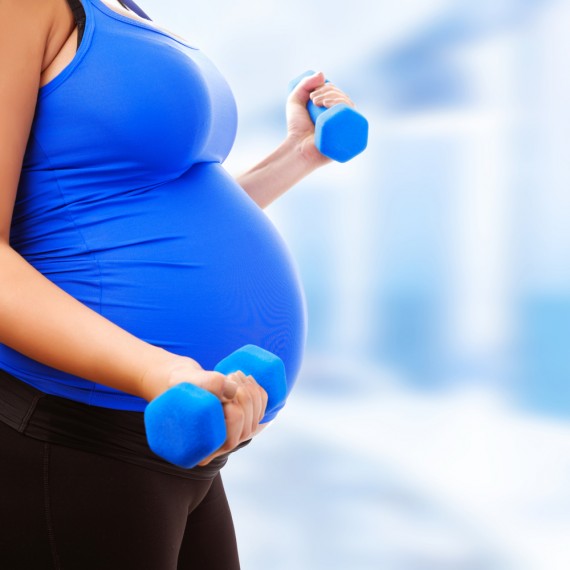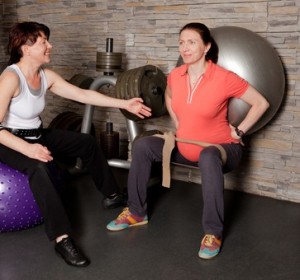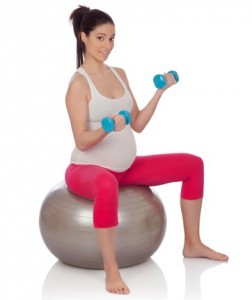Becoming a Fit Mama
Congratulations, you’re pregnant! So… now what? Pregnancy is not necessarily a free pass to sit back with your feet up and eat whatever and whenever to keep baby safe. Nor is it the time to dive head first into a strict exercise and diet regime trying desperately to make up for past health transgressions in order to be in the best shape for your growing baby. It is, however, the first time (of an infinite number more) of putting your child’s interest first.
NOTE: ALL pregnant women MUST get clearance from their OB to exercise and possibly a medical evaluation prior to beginning. For a list of contraindications for exercise; signs and symptoms of when to stop exercising immediately and other American Congress of Obstetricians and Gynecologists (ACOG) guidelines, click here.
With no medical complications and Dr approval pregnant women should exercise a minimum of 30 minutes of moderate intensity most days of the week. In a sense, you are training for a big event – labor and ultimately delivery. But it’s important to remember that sometimes the real work begins post-nataly: Training for the endurance of carrying out your daily activities, possibly working AND now caring and tending to a newborn (think carrying babe and gear, lifting, placing, feeding, changing diapers, clothes, bathing etc). This all can take a toll on a woman especially when sleep deprived and if she hasn’t built up strength and stamina ahead of time.
FIRST TRIMESTER
GOAL: Continue pre-pregnancy fitness OR EASE into a beginner fitness routine.
Fatigue and nausea may be the limiting factors during this stage so listen to your body, don’t try to push yourself too hard and don’t get down on yourself if you’re unable to perform at pre-pregnancy level. If you haven’t been exercising but want to start, get a trainer certified in pre/post natal personal training.
Focus on strengthening the legs and hips, upper back, core and begin kegel work. This will all help mom to adapt to her changing body and the effects on her posture.
SECOND TRIMESTER
GOAL: Build your strength and endurance by ramping up your training
You will be feeling much better and have more energy so you can look to improve your fitness level slightly (this is still not the time to achieve personal bests). However, with your growing belly and breasts and with the release of the Hormone relaxin (which loosens up the joints especially around the hips and pelvis) you will notice big changes in your posture (rounded shoulders and curved lower back) and possibly changes to your gait and maybe even your balance will be affected. You may start to notice that you have to adapt your movement patterns.
Focus on your leg and hip strength, upper back strength, and start working on arm strength. Continue with kegels and core work. You will want to emphasize chest and seated lower back and sciatic stretches. It’s a great time to work on balance exercises and endurance like walking or jogging.
Caution: Avoid sports that could cause trauma, contact, falling or jarring. And from now on omit ALL exercises where you are lying on your back.
THIRD TRIMESTER
GOAL: Comfortably maintain fitness level and prepare for labor, delivery and life with baby
By this time your posture and center of gravity may be way out of whack and rapidly changing. It may feel like you’re operating unfamiliar machinery. Add to this the enhanced levels of relaxin and it could also feel like your literally coming unglued at the hips, knees, ankles and other joints. At this stage and closer to delivery you may start feeling tired and heavy. You may find your balance is off and you’re more prone to clumsiness. So during this trimester the focus is to try and maintain your previous exercise routine as best as you can but listen to your body. Continue to strengthen the legs using squat holds, wide squats and lunges. Work on gentle balance exercises and continue with the core, upper back and arm strength exercises; chest and lower back stretches, and kegels. An excellent modality for women at this stage is walking and swimming.
Caution: Avoid all exercise and movements that require quick movement, agility, plyometrics, or high impact. Avoid over-stretching and NO lying on your back exercises.
If you have no medical complications there is no reason why you can’t continue with a modified exercise plan. Not only will it improve your health, the baby’s health, your mood and sleep but it will set you up nicely to deal with the stress and challenge of labor and delivery and more importantly, a speedy recovery to give you a head start on a new (and busier) chapter in your life.























